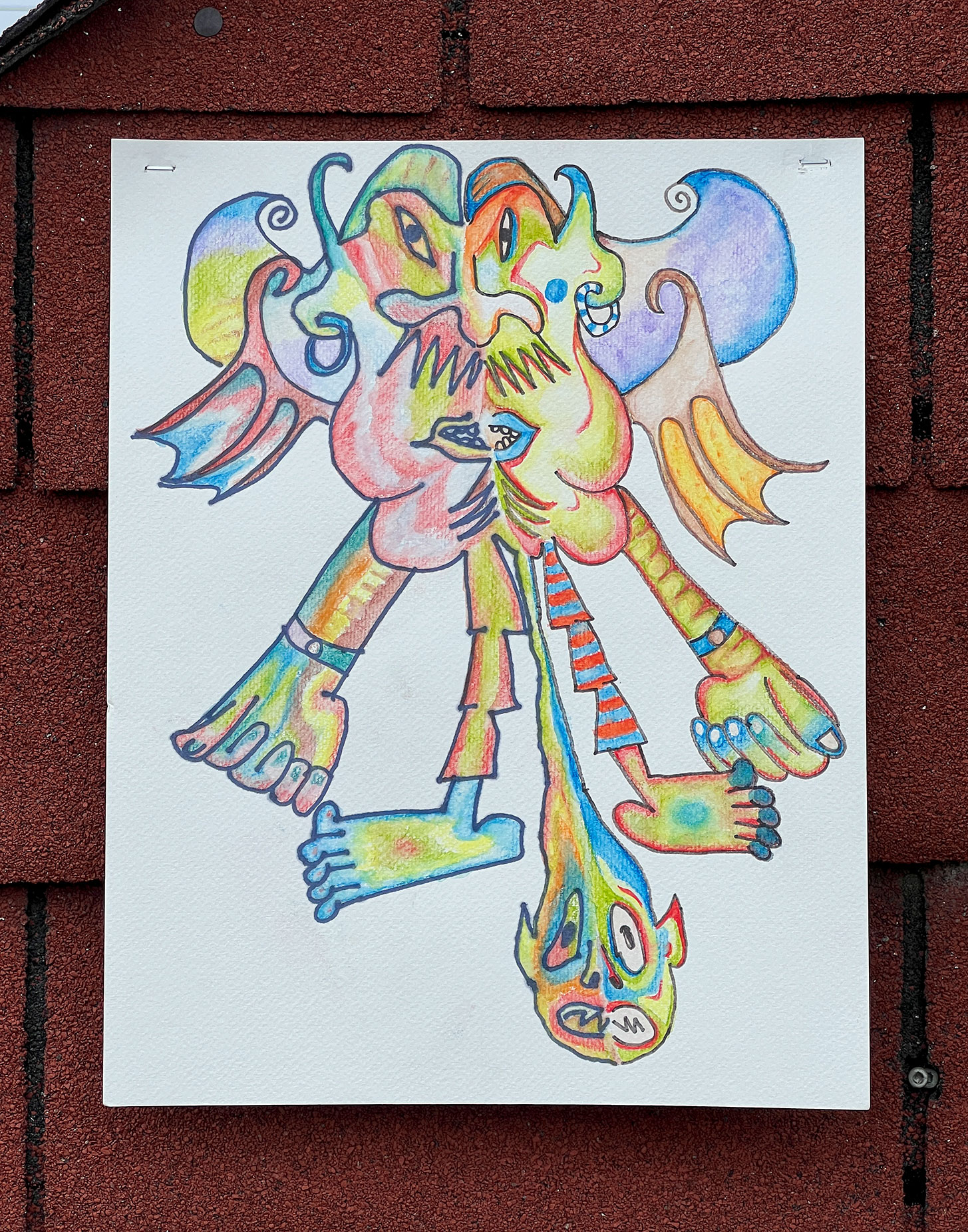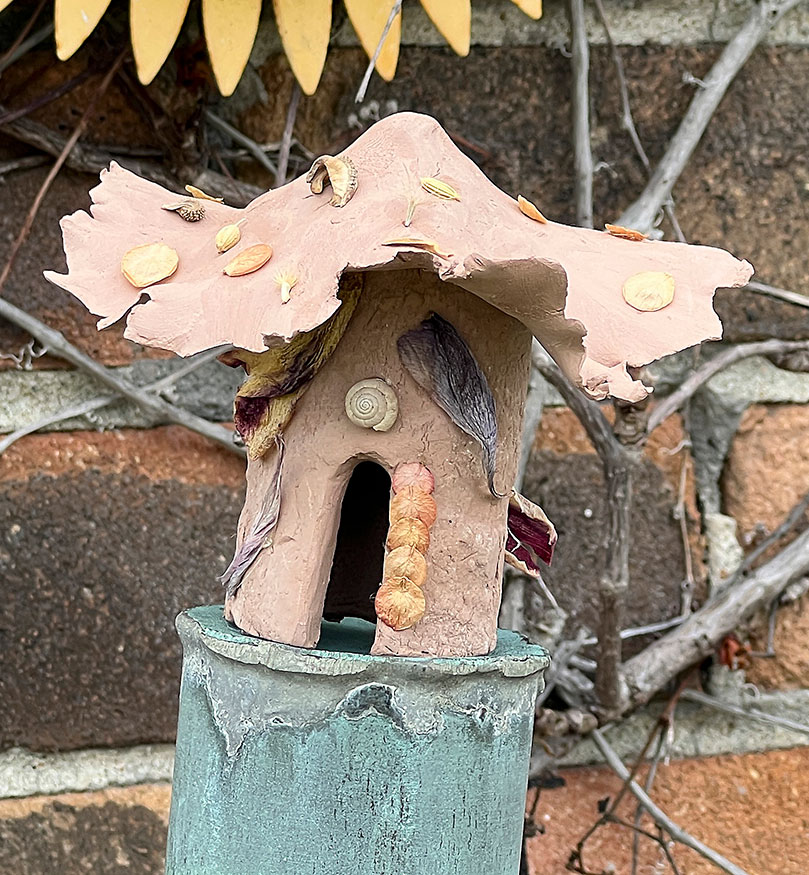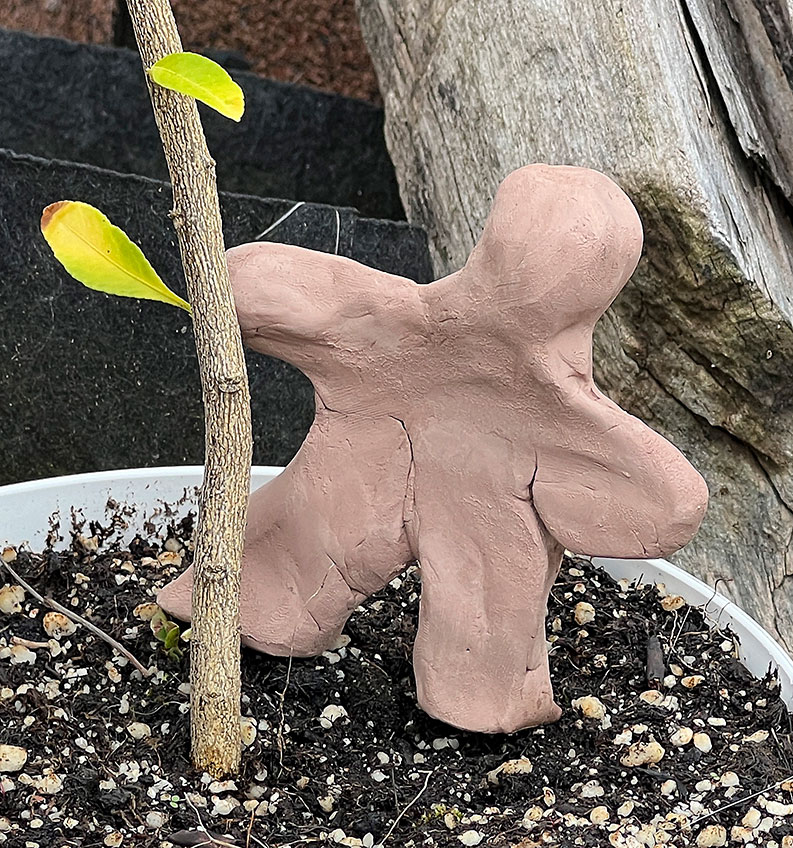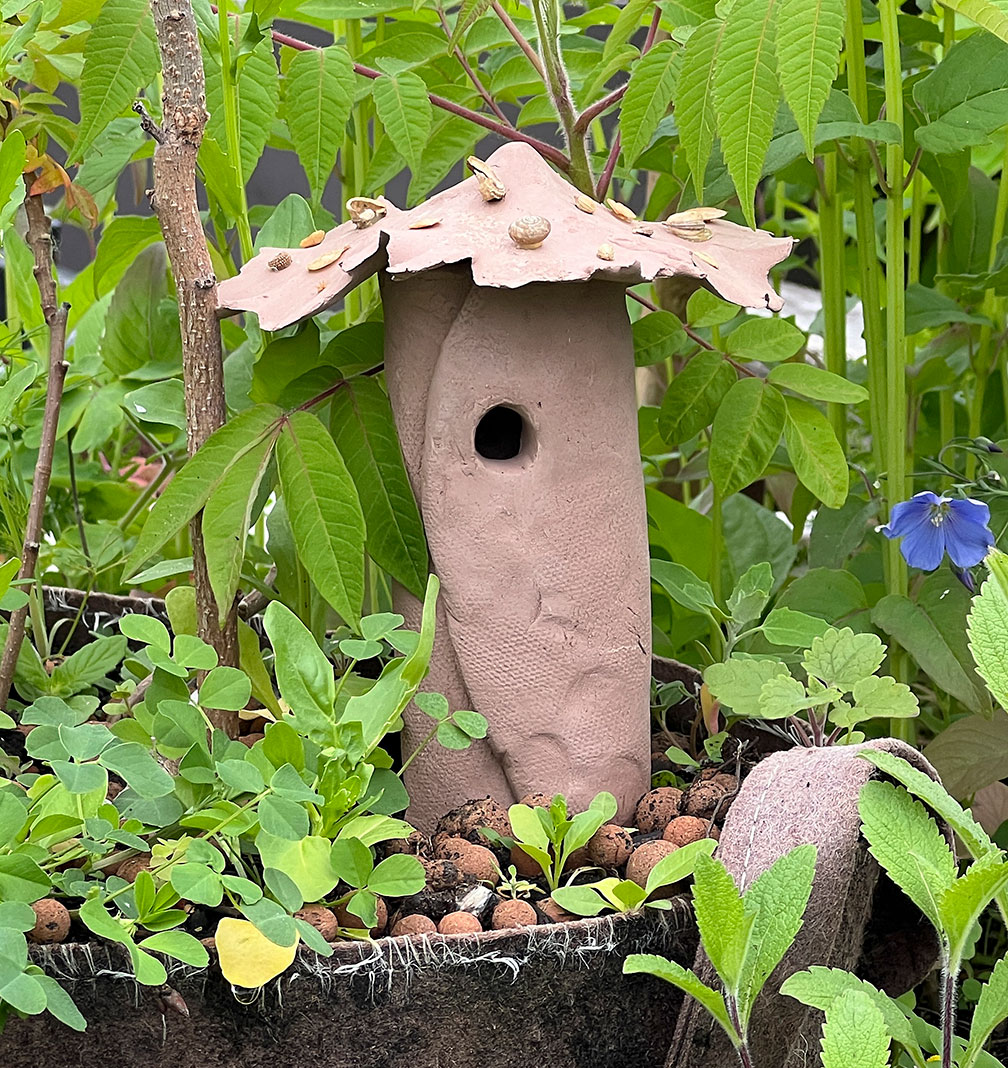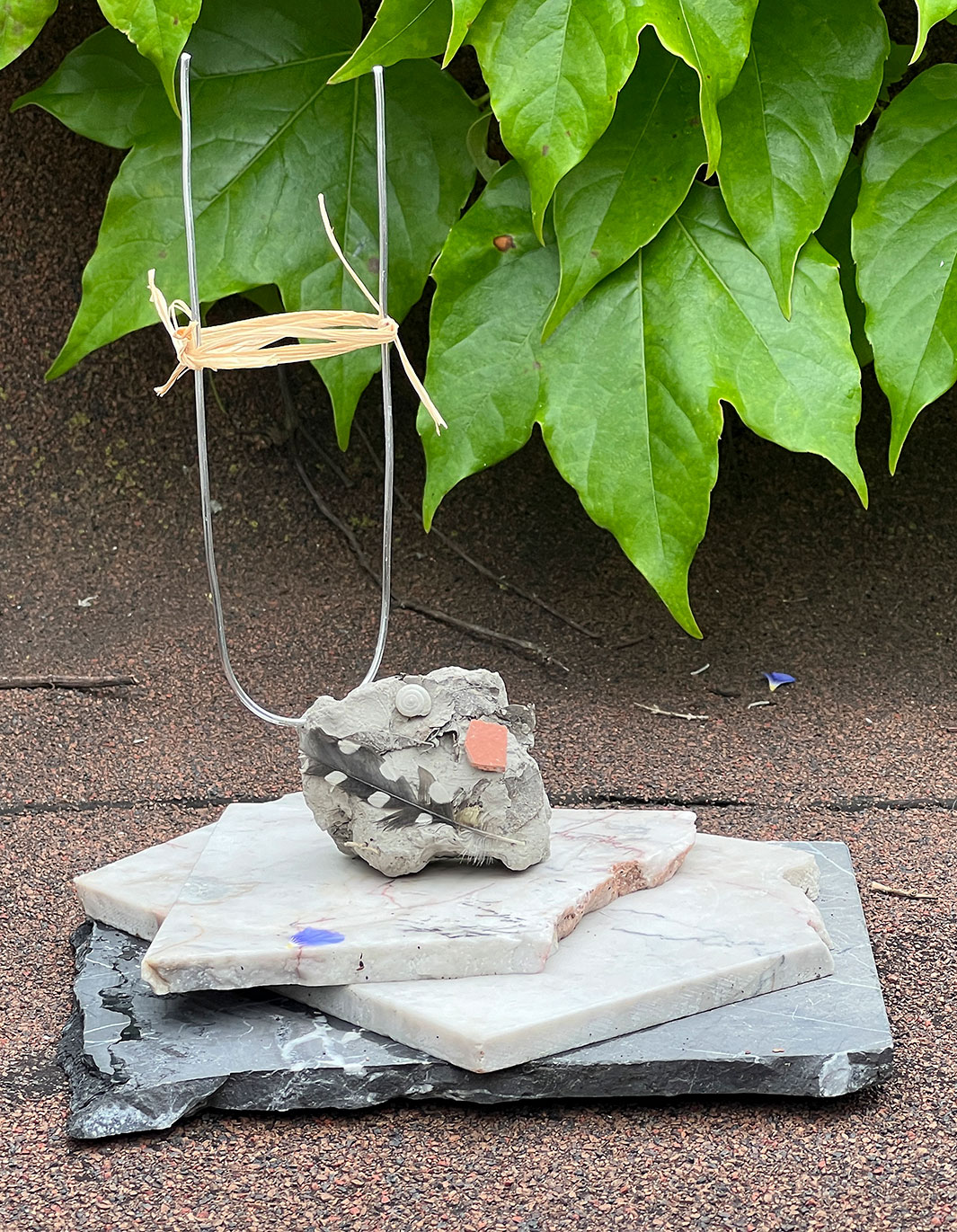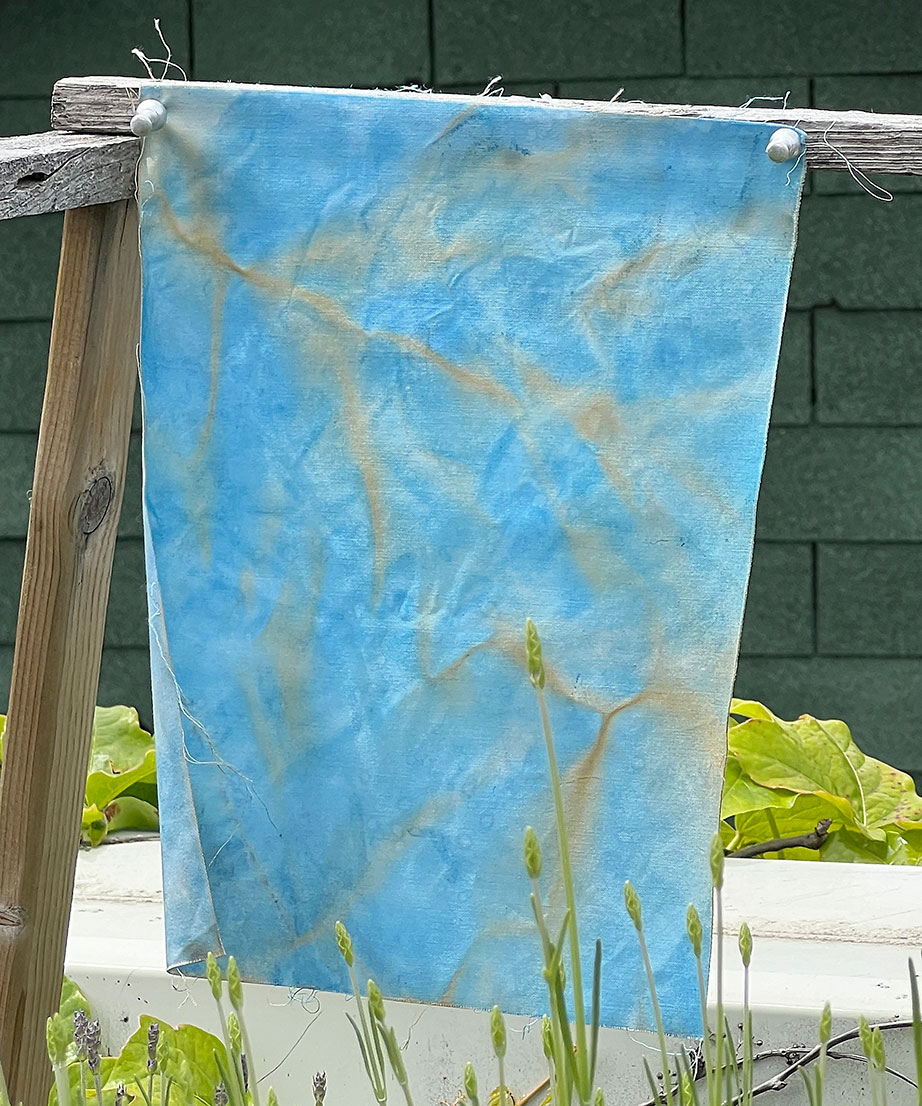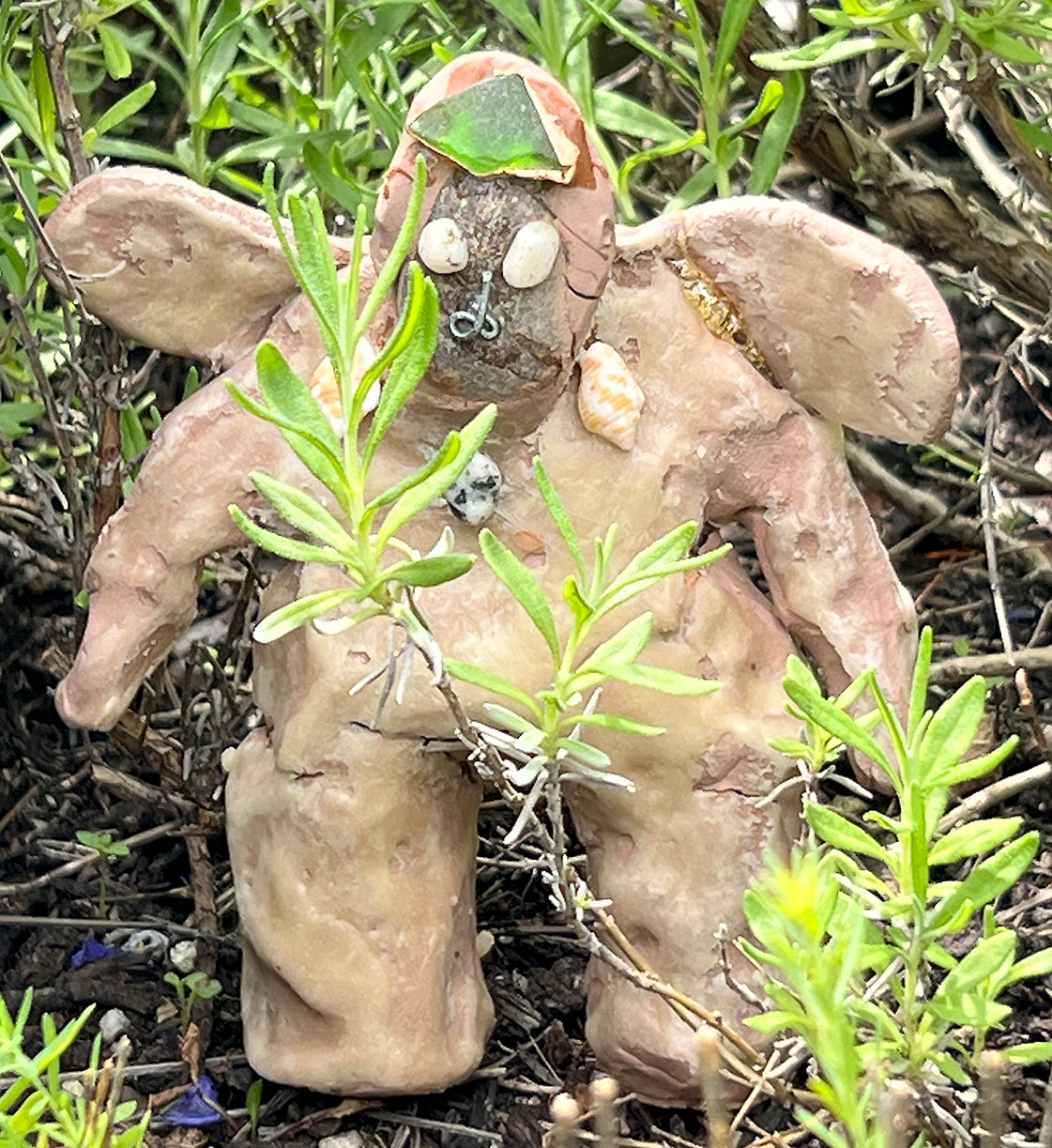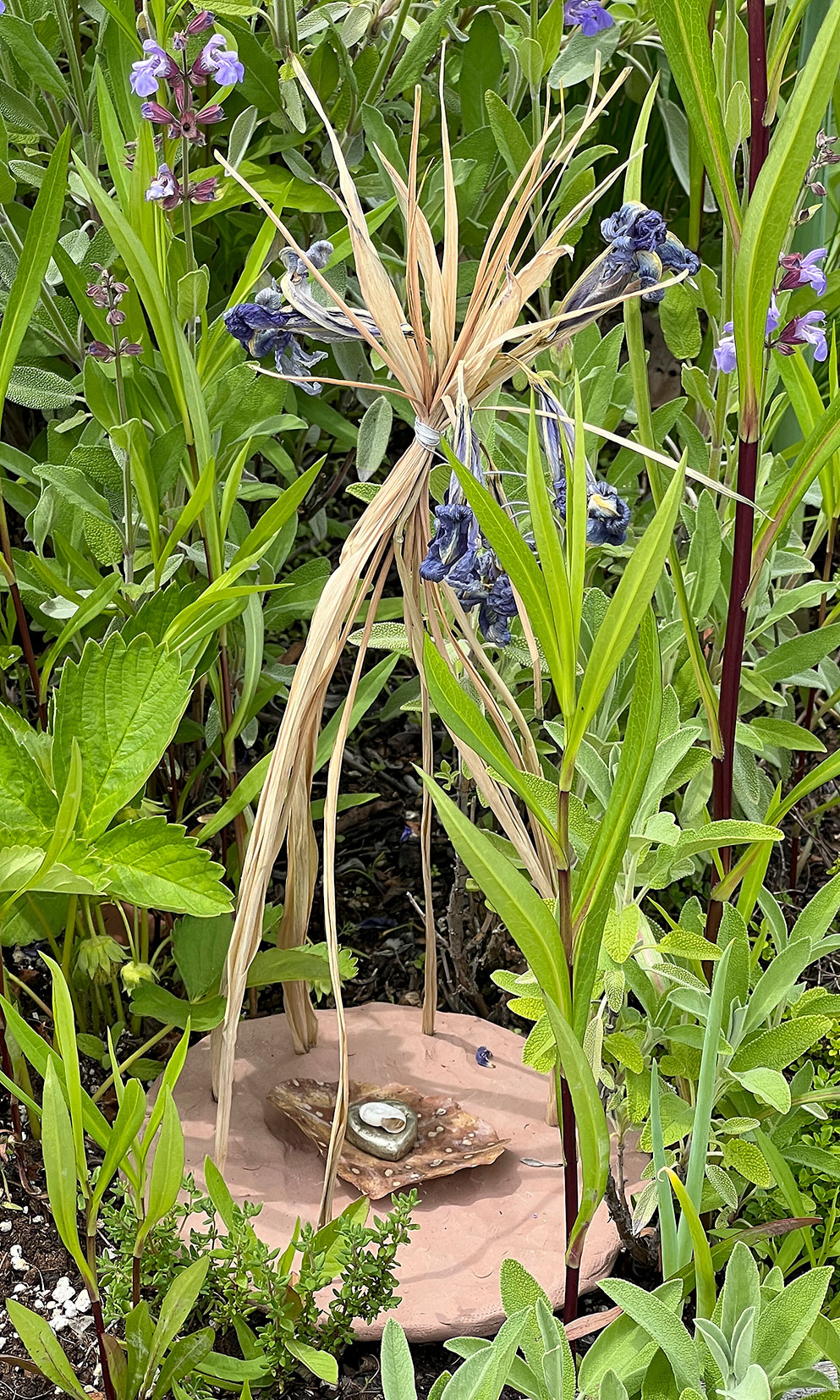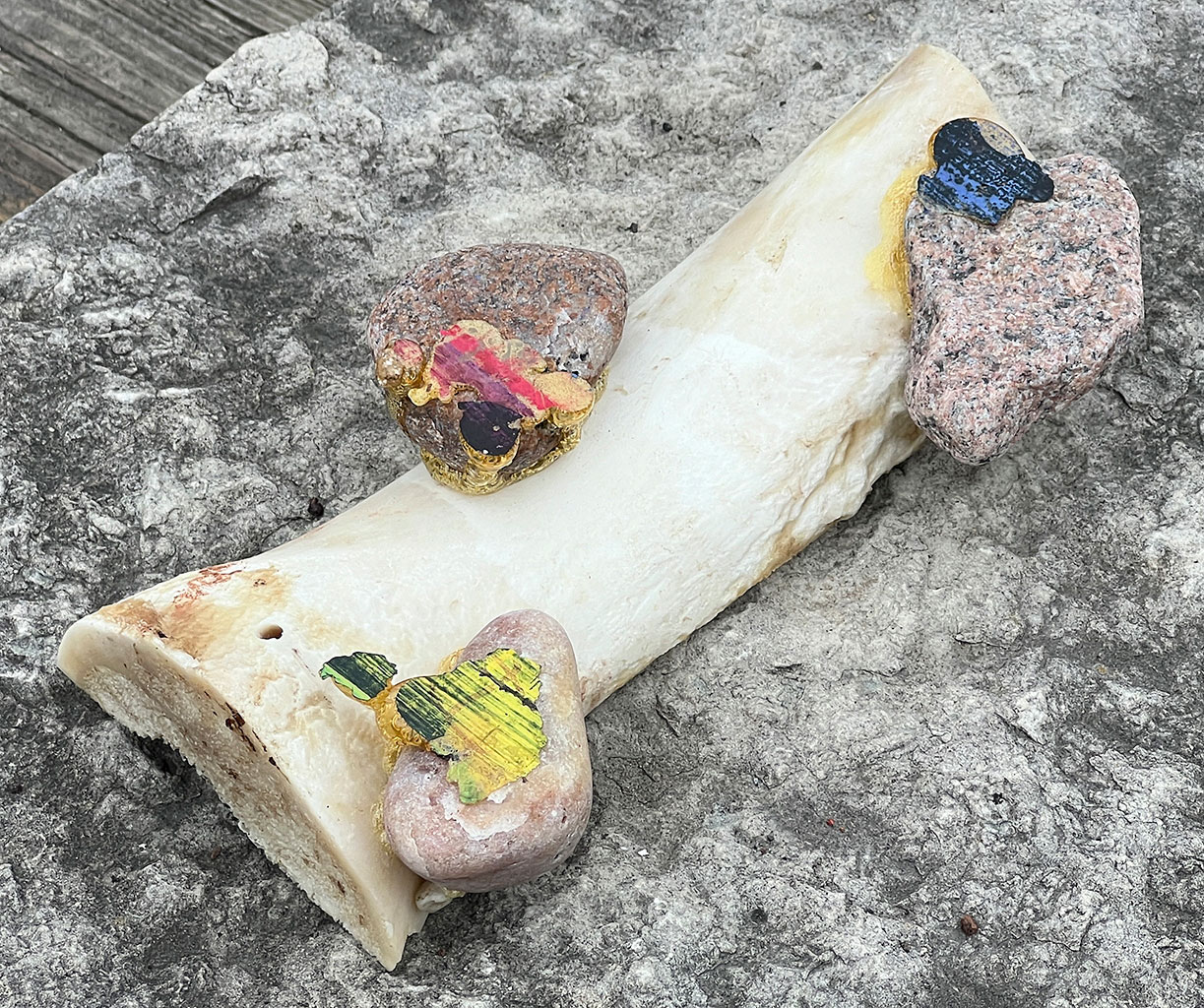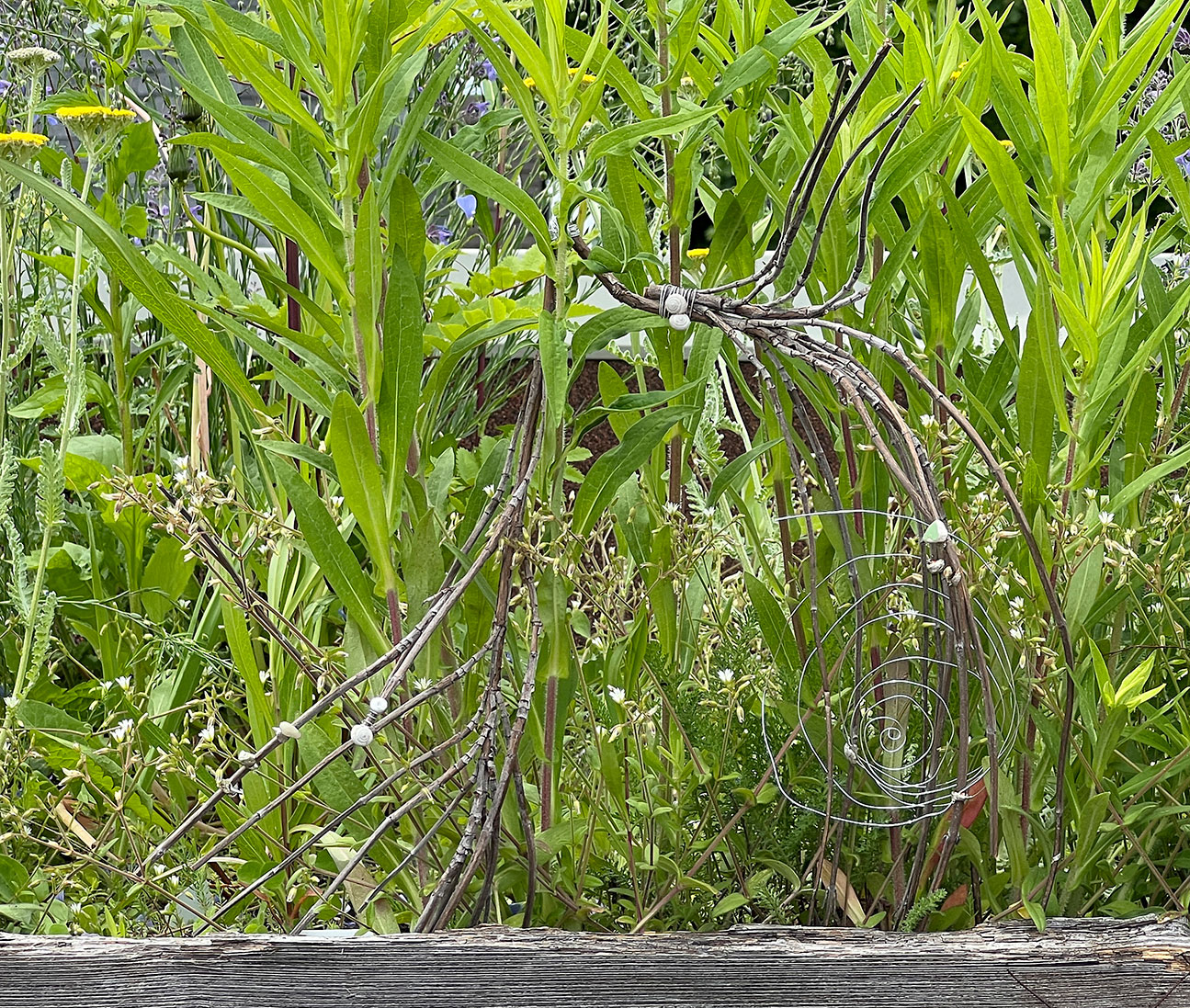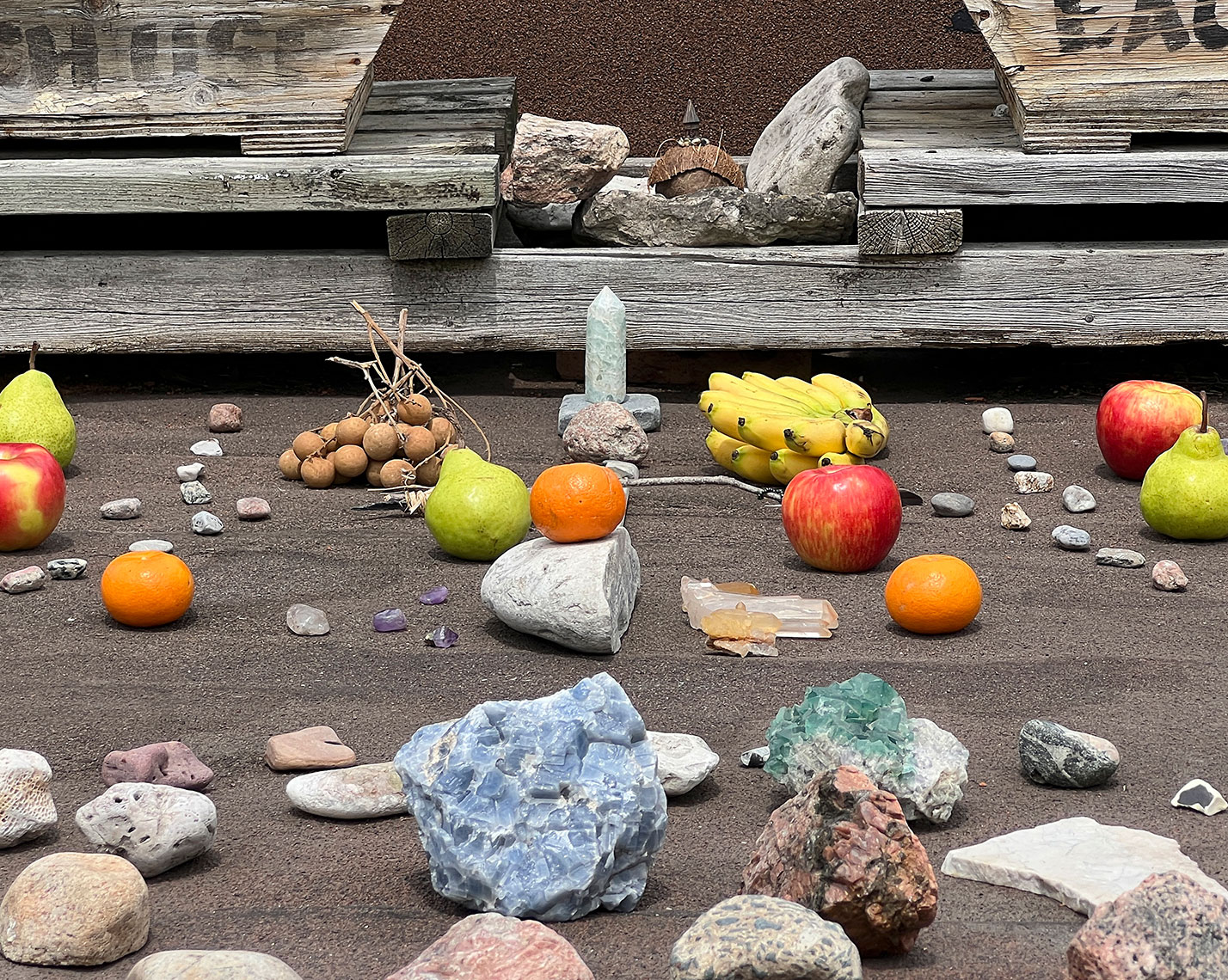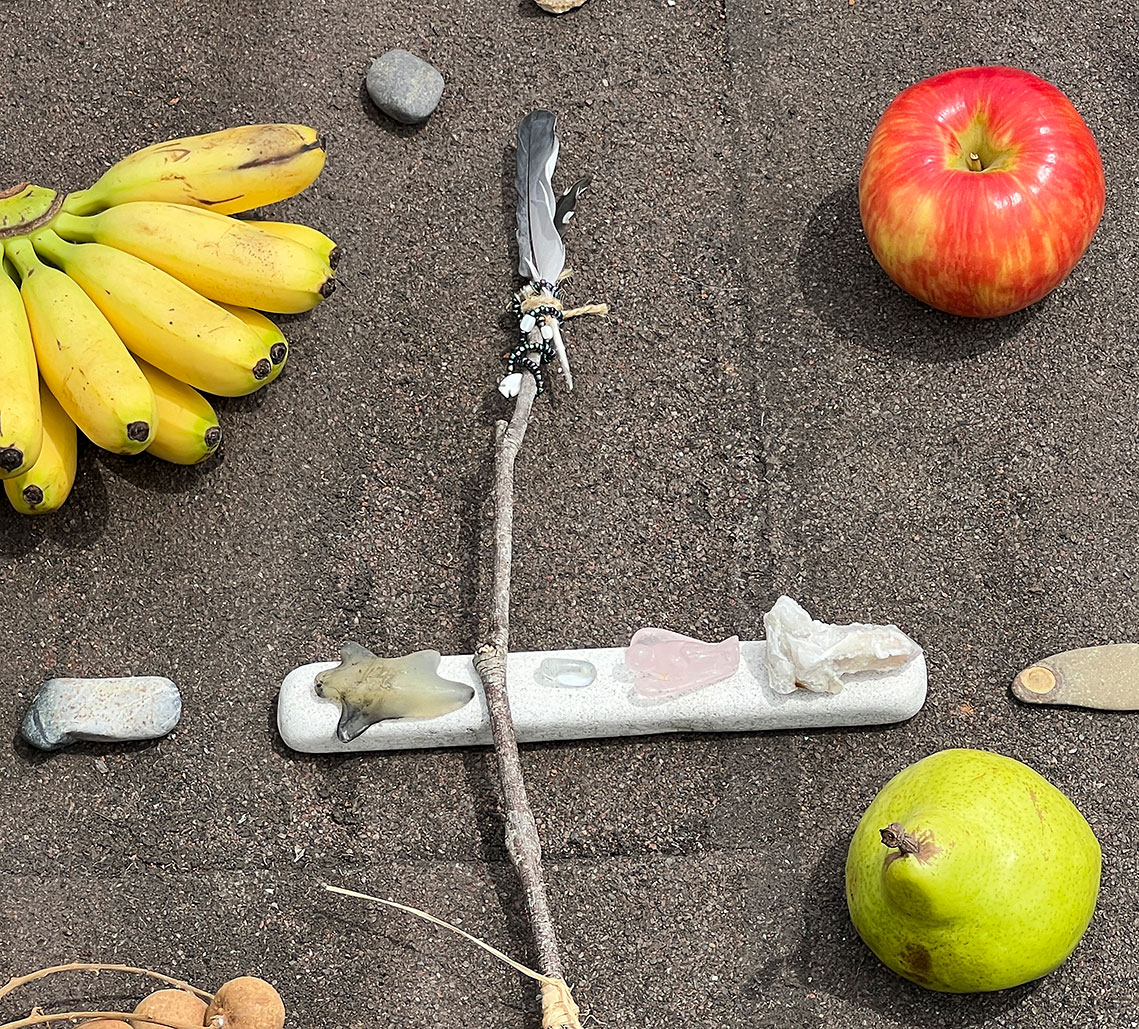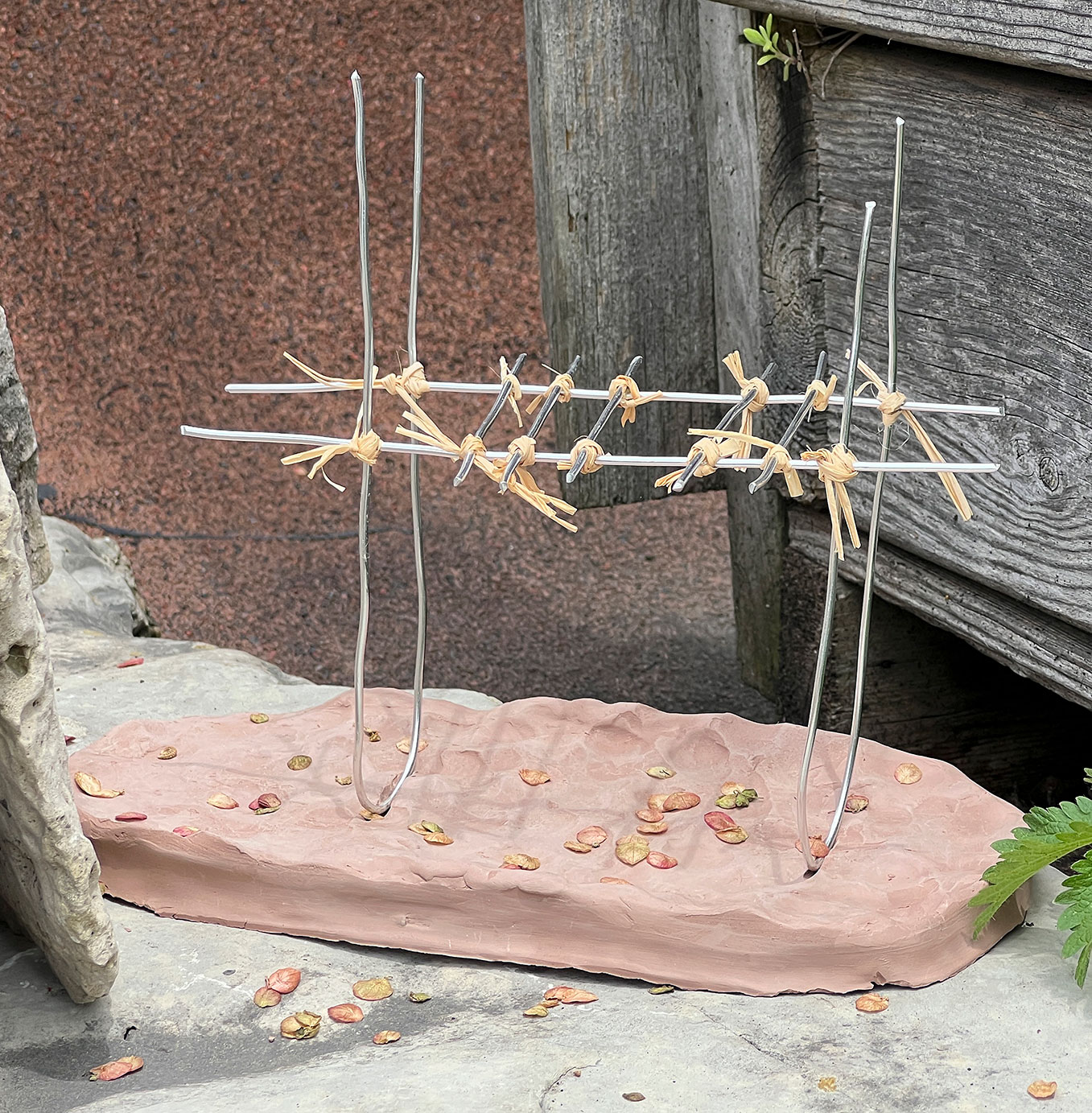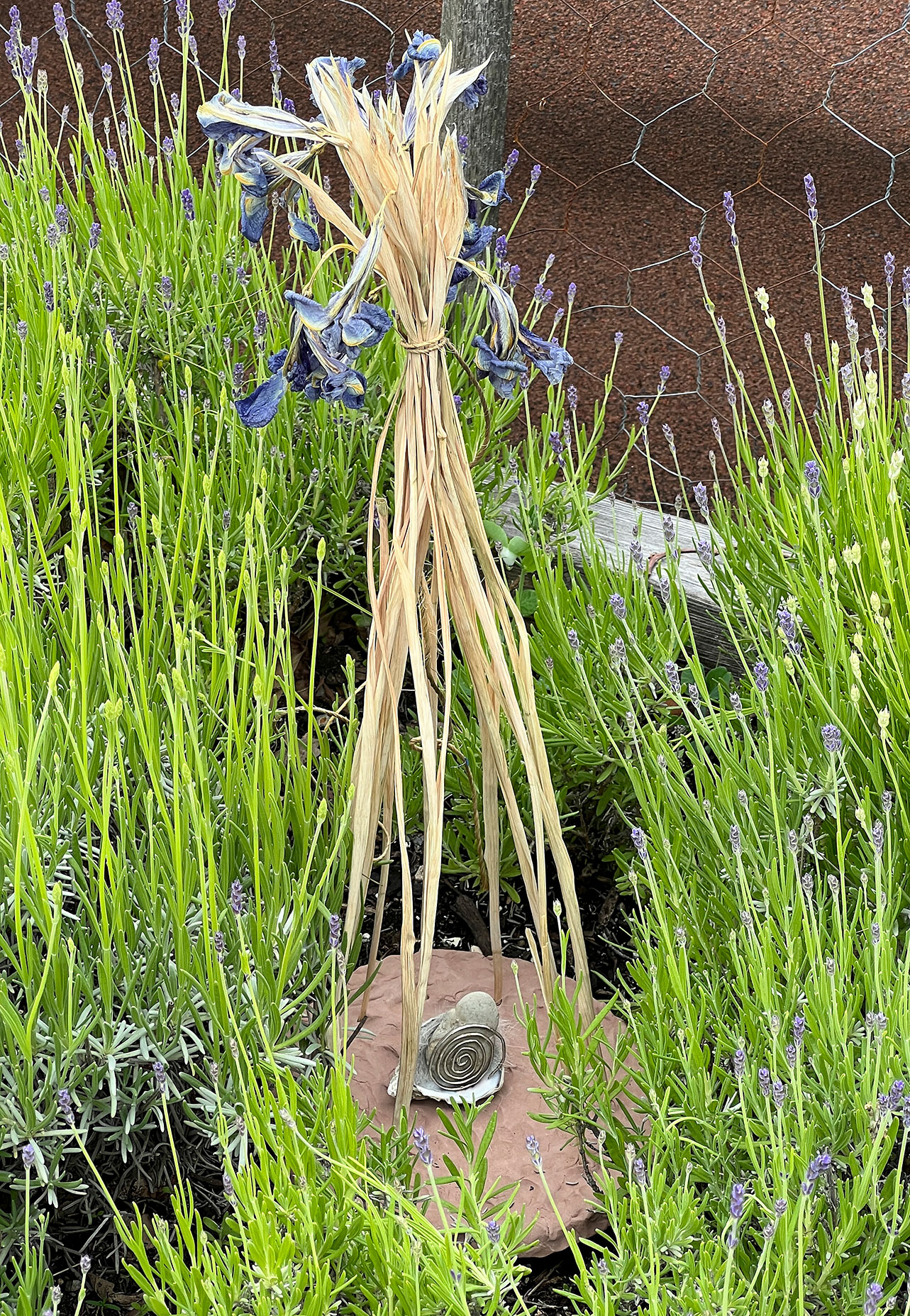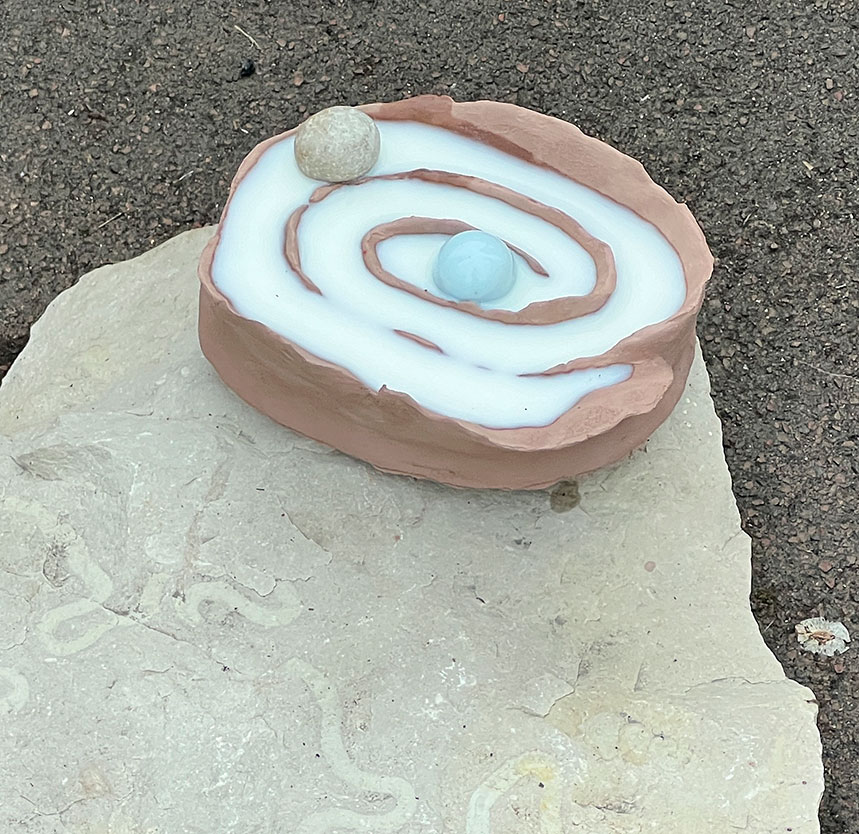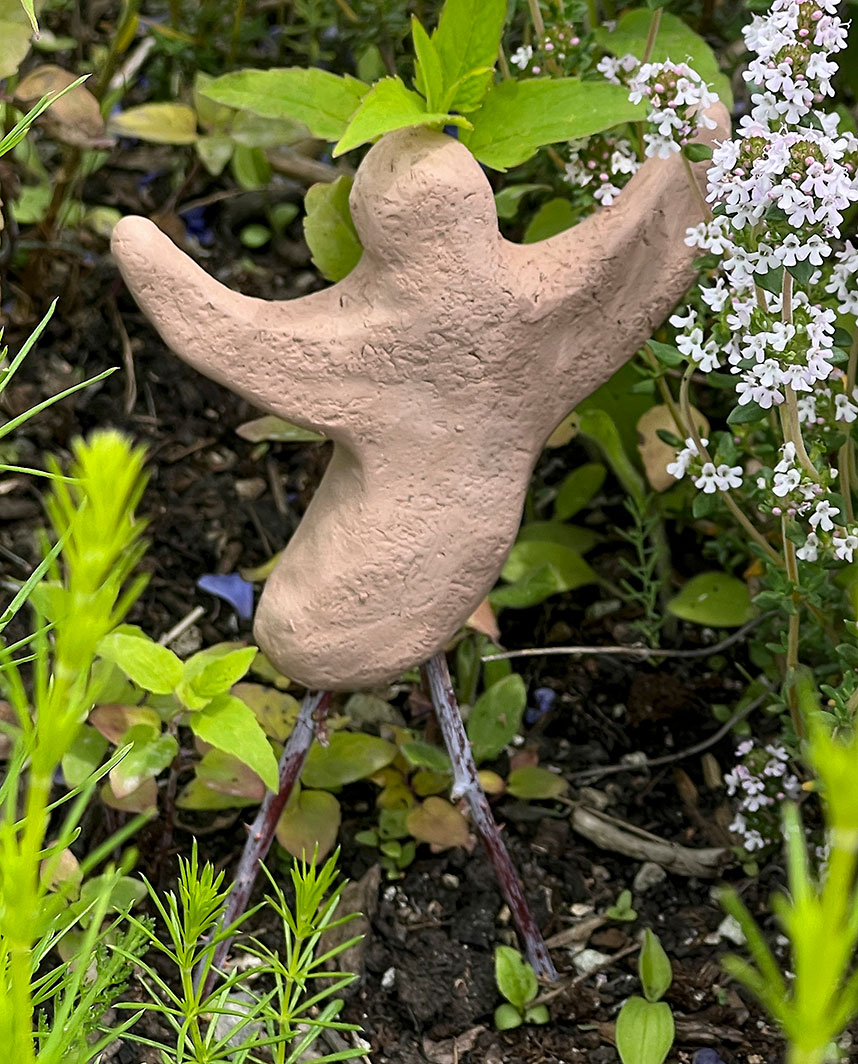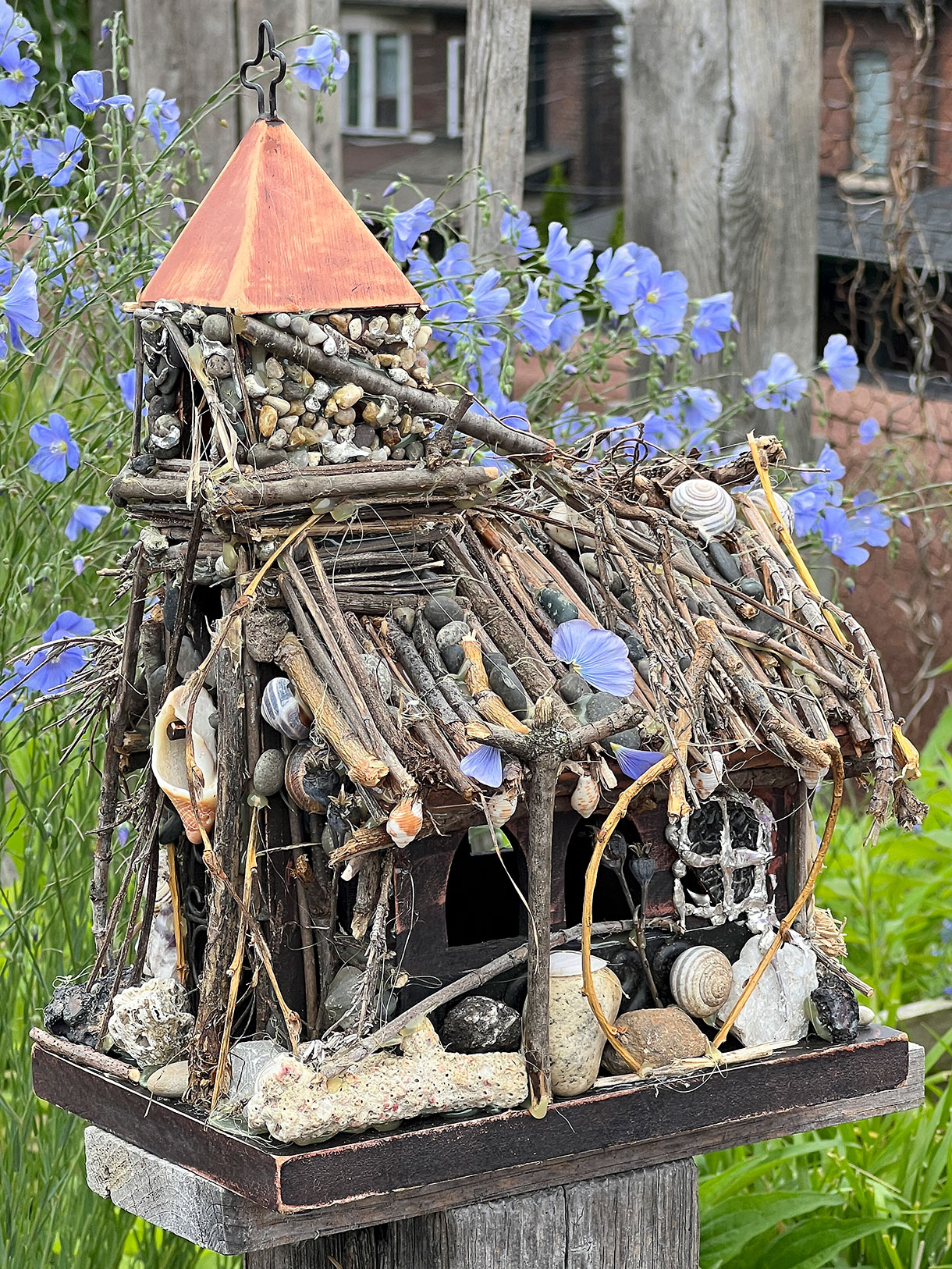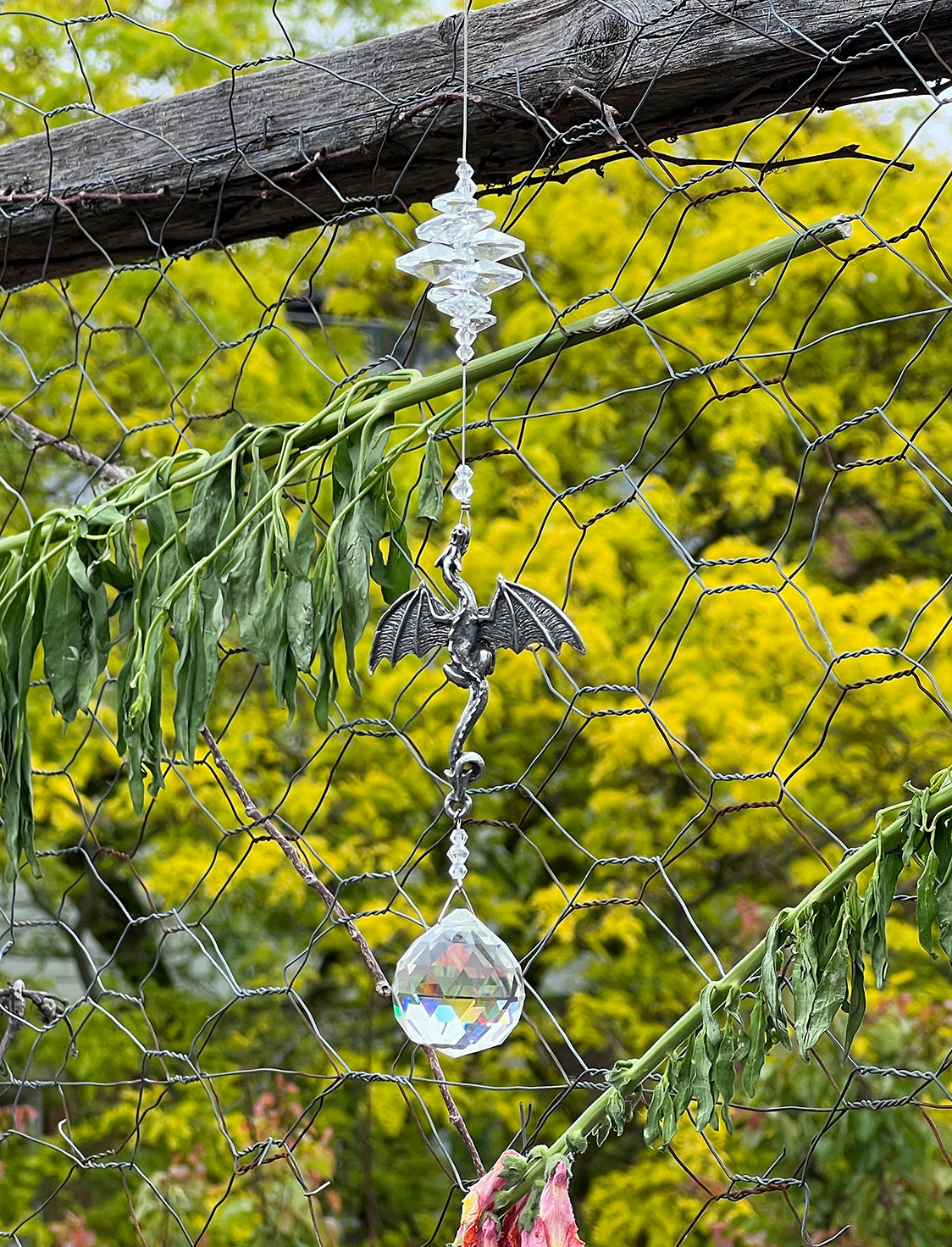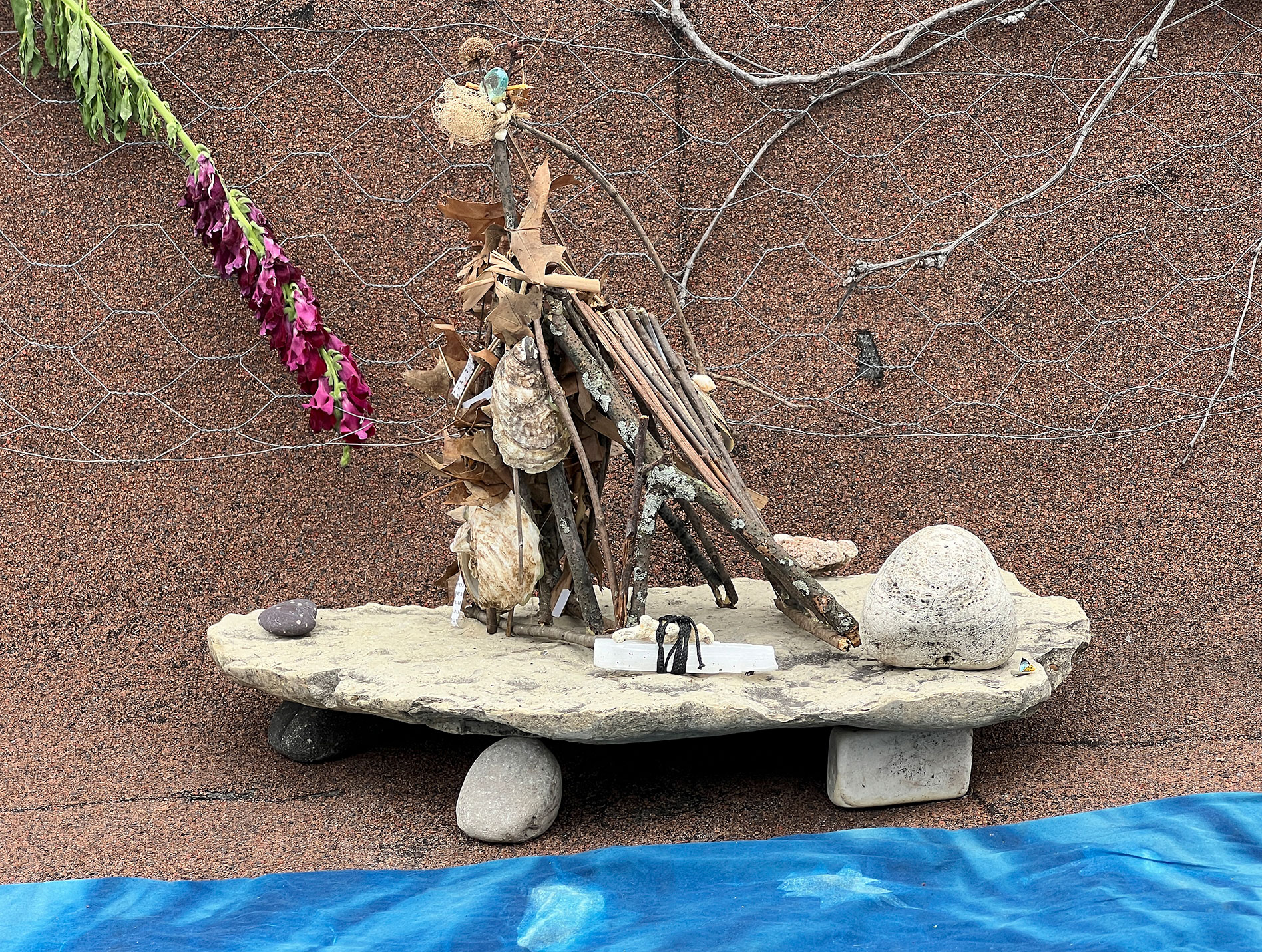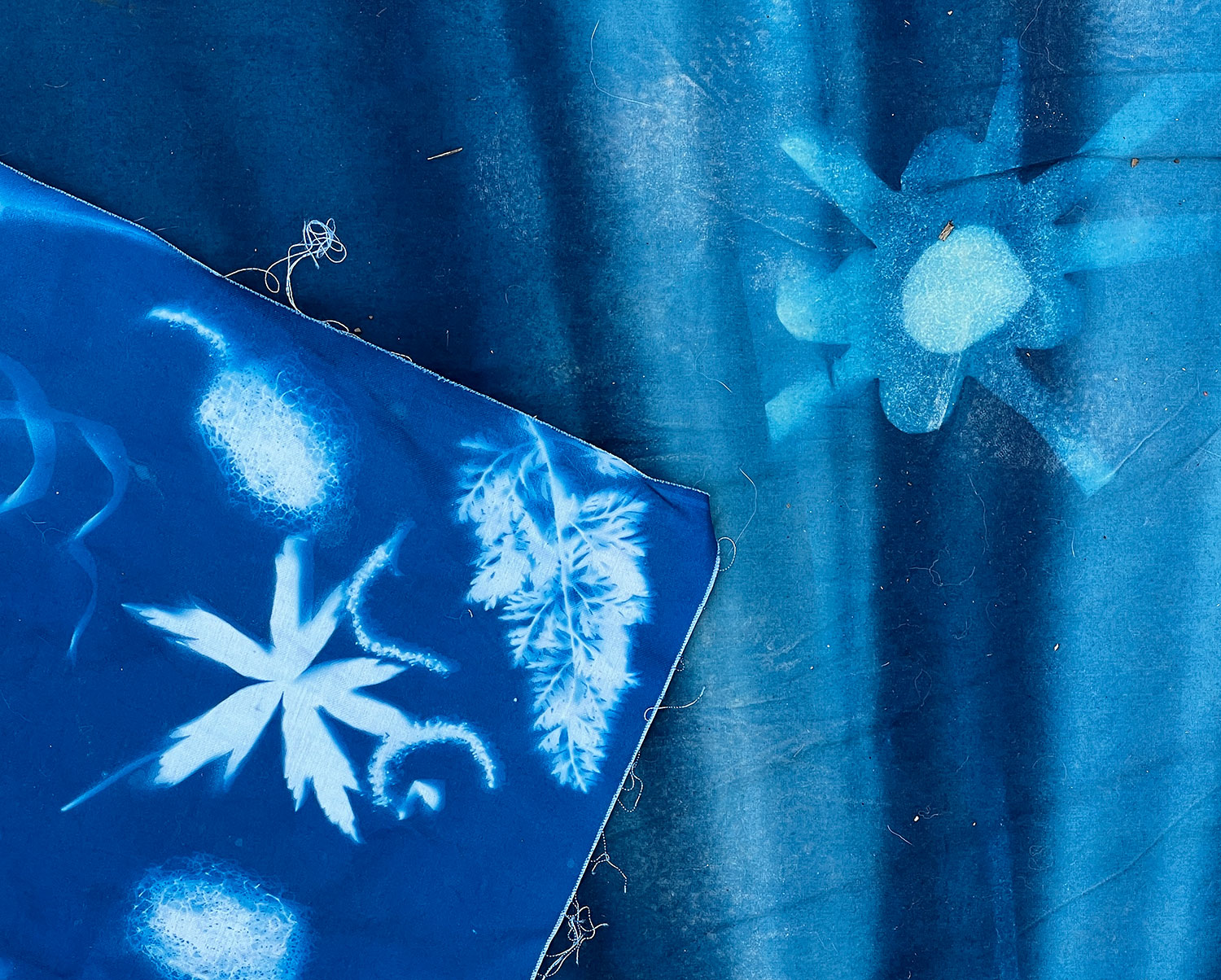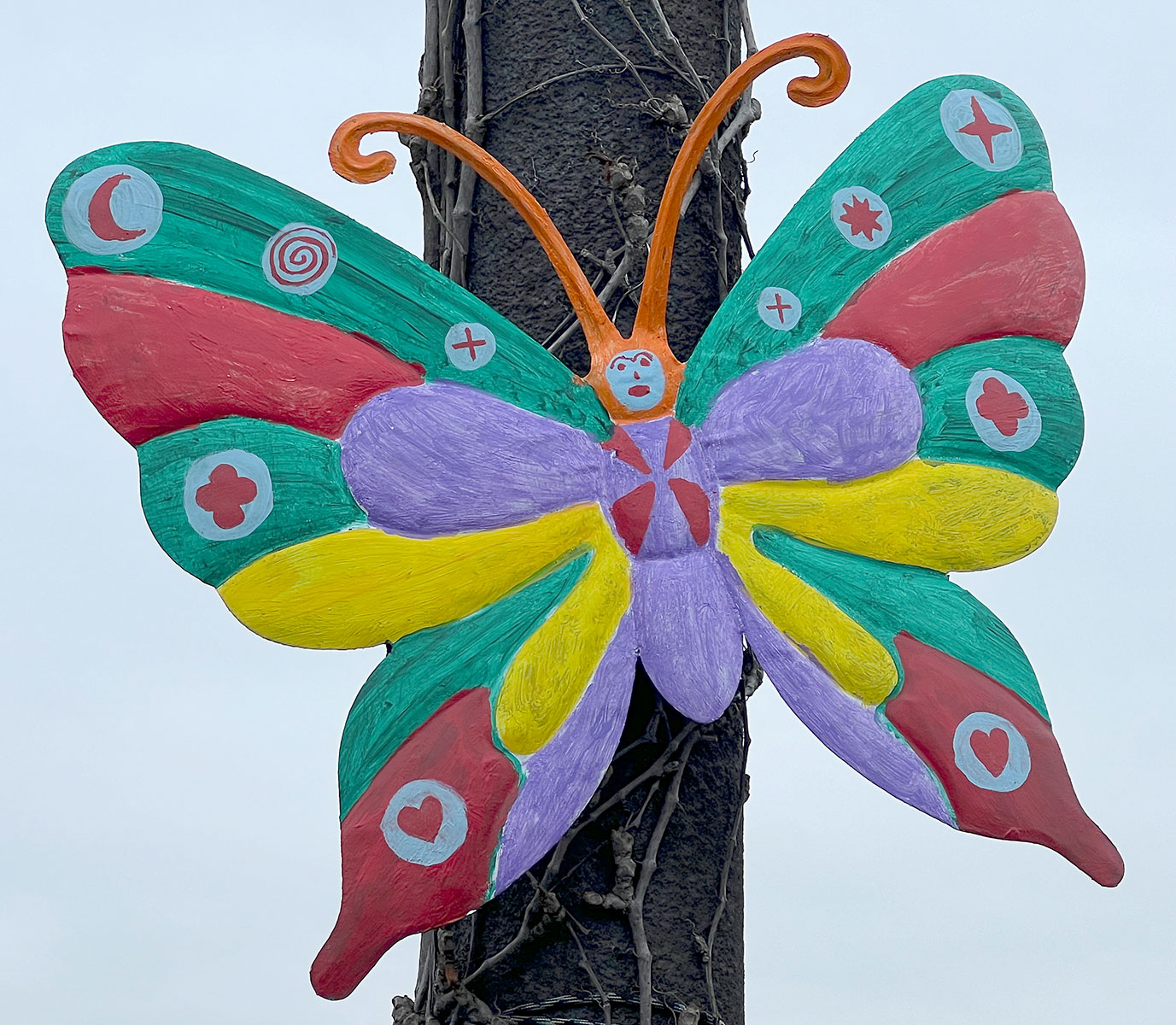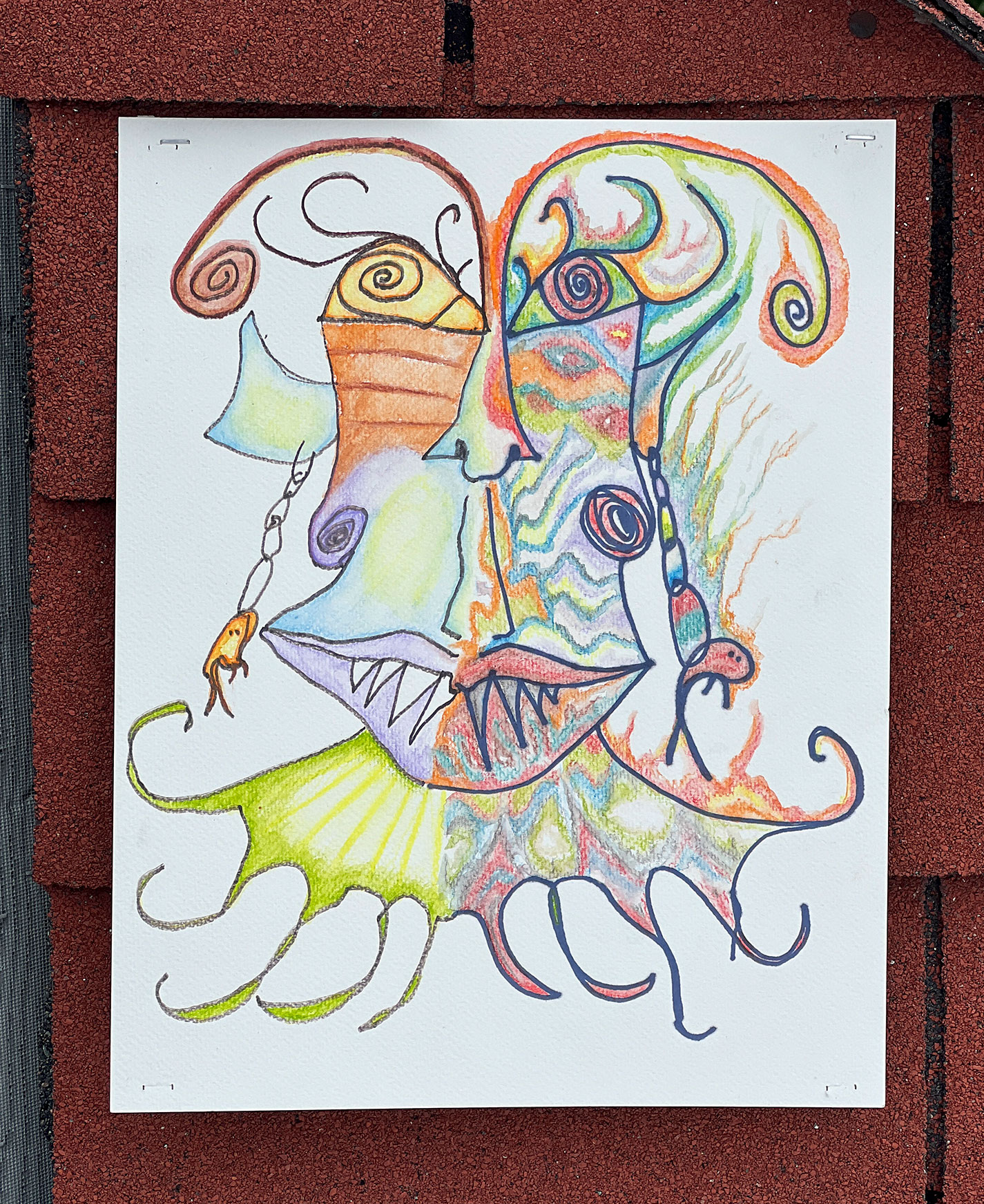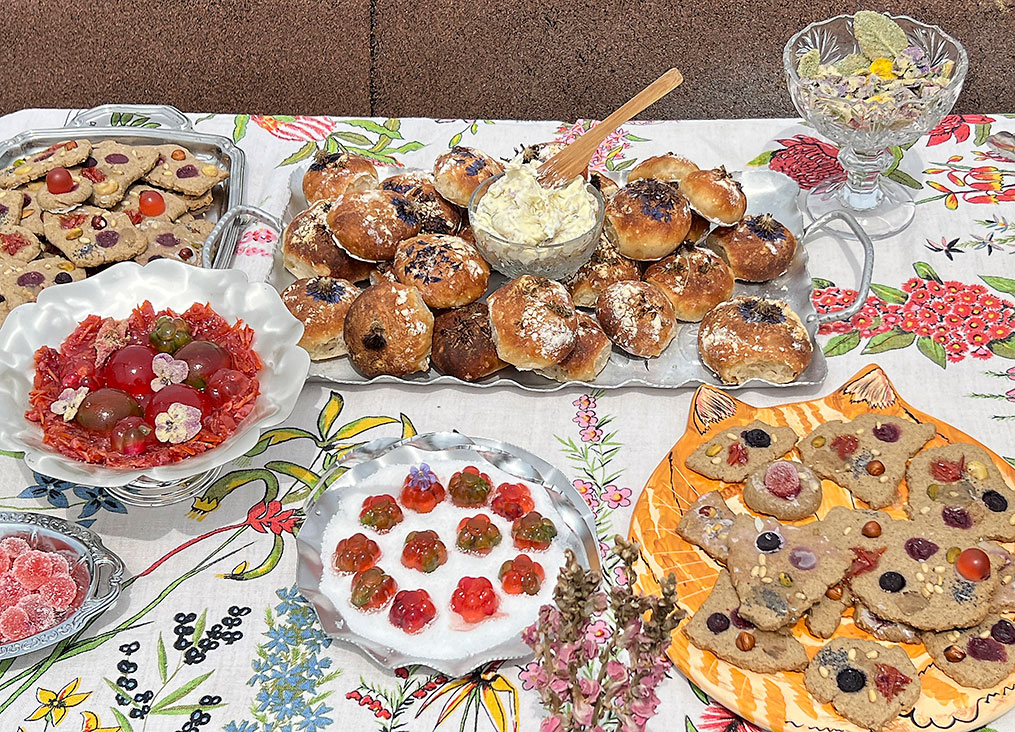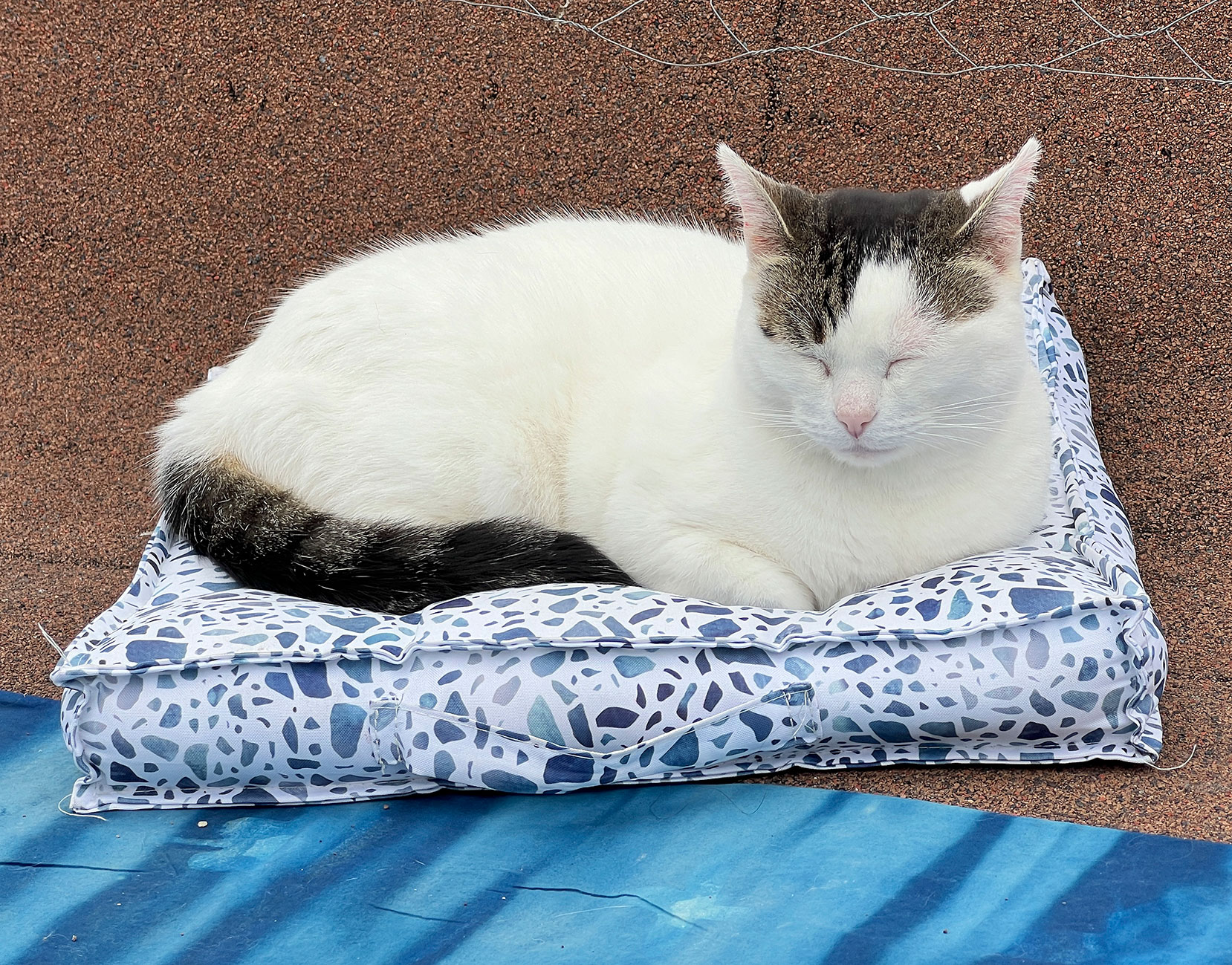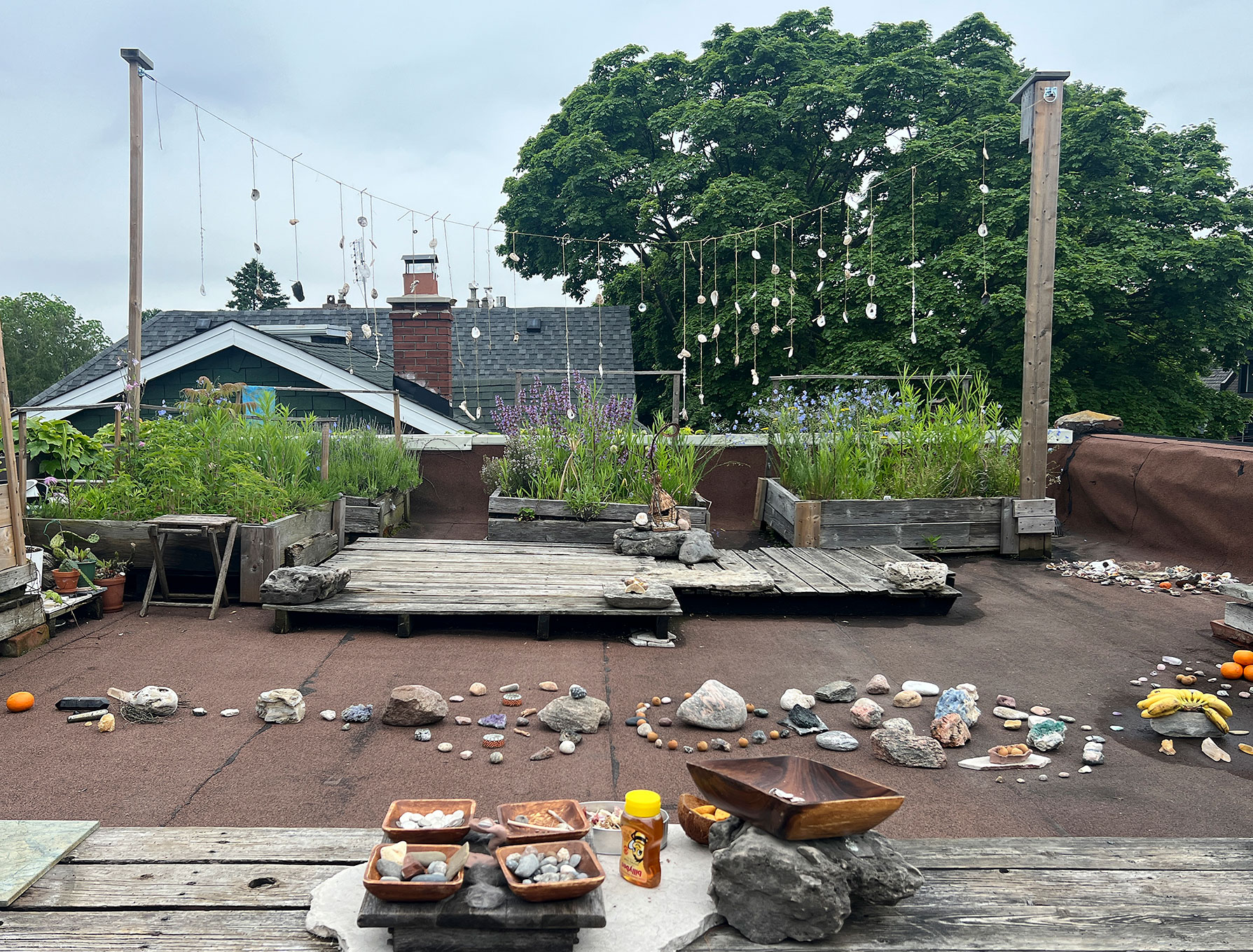1 June 2024
Moire’s Catwalk and Boring Earth are pleased to present FAE FAE FI FI FOU FOU, a body of offerings to fairies and nature spirits. Inspired by the diverse cultural traditions and folklore that fairies imbricate, FAE FAE FI FI FOU FOU celebrates the presence of nature spirits who work in collaboration with the environment, drawing their presence into Moire’s sky garden to encourage heightened awareness and stewardship of our more-than-human world. Through offerings, land altars, sun drawings, and temporal dwellings, this project proposes a momentary link with the fairy realm, and proliferating connections to the world we share.
Squint To “look at someone or something with one or both eyes partly closed in an attempt to see more clearly or as a reaction to strong light” (Oxford Languages). 1570s, of the eyes, "looking different ways; looking obliquely," shortened form of asquint (adv.) (Online Etymology Dictionary).
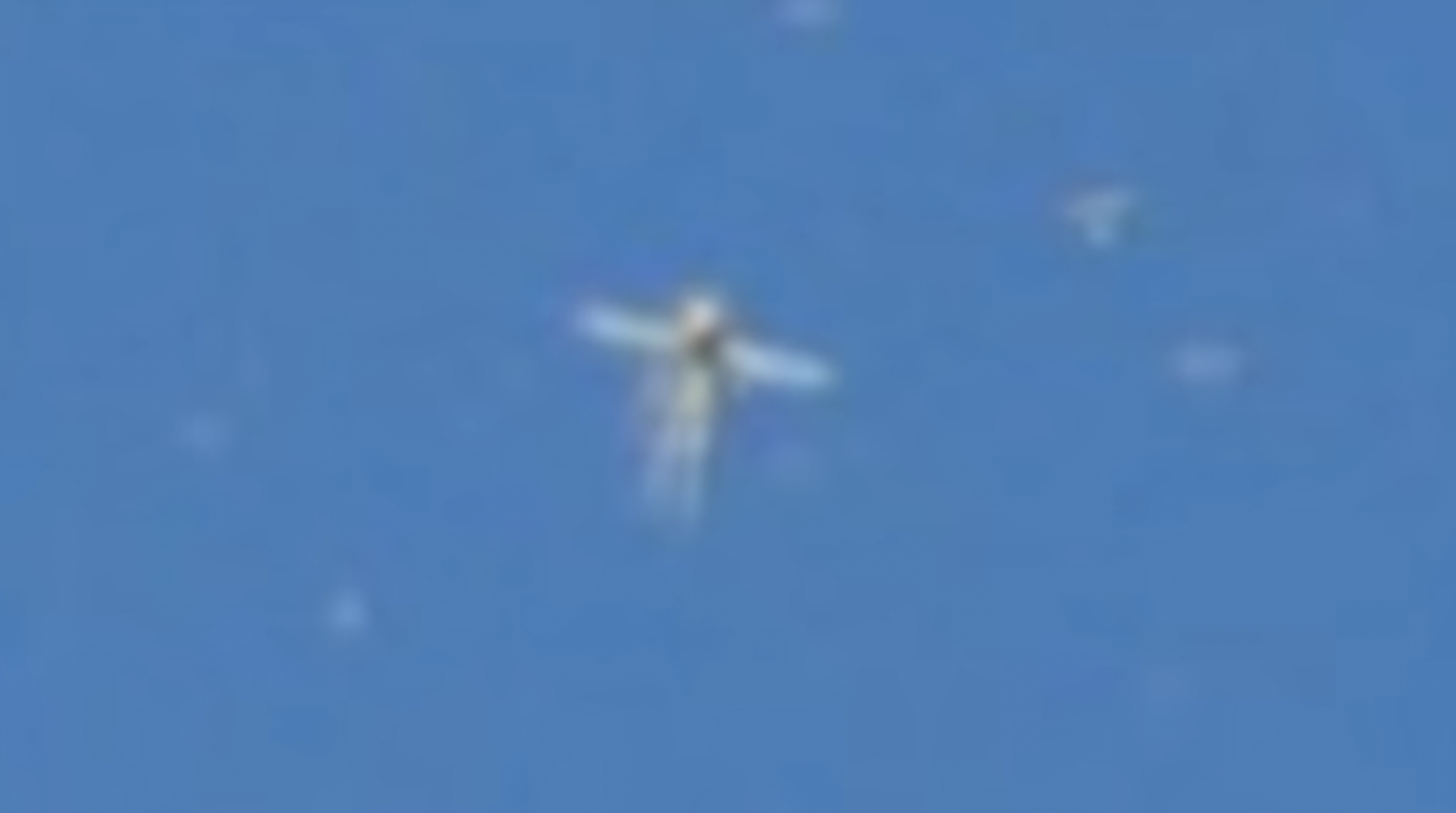
Consider squinting. Consider this small pile of pixels, which wink lambently from your screen. REAL fairies, caught on tape?
In February of 2023, Mexico’s president posted to Twitter an umbral blur: it was, he declared, an Aluxe, a mythological Mayan woodland spirit similar to an elf. He signed off his tweet: “Todo es místico.” Everything is mystical. To squint towards fairies and other mystical non-human beings is to be made attentive to the brilliant obscurity of the more-than-human world. It is an opaque animacy which resists grasping and demands regard. To squint into the fairy realm is also to partly close the eyes to academia and other dominating ways of seeing—and especially the appropriative seeing of nature—to intuit new relations and dependencies with our more-than-human communities.
Strange, entangled vitalities grow in urbanized lands. Consider Tkaronto’s chimney swifts who, along with the Mazina'iga-ziibing Misi-zaagiwininiwag, ᐊᓂᔑᓈᐯᒃ, Haudenosaunee, Huron Wendat, and other Carolinian forest dwellers, were displaced by European settler logging in the 1700s. The swifts shifted their homes from tree hollows to the warm caverns of chimneys (a chimney is a tree is a house if you squint). Then, as Ontario’s residents transitioned away from coal to (purportedly1 ) more sustainable heat sources, the chimneys were lost too. This connection between swift livelihoods, historic displacement, and sustainability policy resists a generalizing green development narrative. It invites a more creative, situated response. An animating question for FAE FAE FI FI FOU FOU is how we could support fairies in living well with us in our human-wrought landscape2. In forming fairy dwellings and offerings, we might ask: how do you care for your community? Who cares for you? What do you need to settle in and feel well? By incorporating a more-than-human lens on urban placemaking, we can bring a more nuanced understanding of how humans and non-humans (including fairies) have, do, and could live reciprocally within this context.
1As reported by Bill McKibben (2023), recent studies suggest that “natural” gas is actually more damaging to the environment than coal.
2 A brief opening of the eye to academia, for context: c/a/n/a/d/a*’s ecosystem is increasingly urban; nearly 74% of our population lives in large metropolitan centres that expand with each passing year. While our human population is growing and becoming increasingly diverse, our non-human community members are in a profound decline in both diversity and abundance (IPBES 2019; Rosenberg et al., 2019), with many suggesting that this crisis and humankind’s general disconnect from nature is the direct result of urbanization (Pyle 2003; Turner et. al. 2004; Miller 2005). As our cities densify, we are also seeing a rise in green gentrification, where an elite-defined “nature,” shaped through optics of increased property value, displaces disproportionately non-white citizens and their place-based practices, exacerbating the unequal power dynamics and spatial polarization of the urban realm (Dooling 2009; Quastel 2009). Research shows that socio-economically marginalized communities in Tkaronto experience distributional inequities of tree coverage and pollution (Greene et al. 2018; Zalzal & Hatzopoulou 2022), leaving their children more vulnerable (and more likely to contribute) to the effects of climate change, with little recourse to benefit from the positive wellness outcomes nature connectedness provides (Arola et al. 2023, Barragan-Jason et al. 2023, Miller 2005). These are lands that have already been stolen from Indigenous stewards and razed of critical ecological habitats; in this way, we can think of Tkaronto as a dense palimpsest of displacement—and rich humus for interspecies solidarity.
Studies suggest that it is not the amount of time one spends in nature, but the participatory experience of sensing the environment that cultivates nature-connectedness (Keith et al., 2022). If we can engage each other in collaborative practices of respect, care, and joy with non-human neighbours, there is greater potential for time spent in urban nature to be meaningful. In this way, even small, weedy spaces of nature connectedness can cultivate new worldviews and reciprocities that strengthen biodiversity and climate justice action at larger scales.
*stewart, l. p. r. “refusing the colonial grammar of c\a\n\a\d\a: a conversation with luugigyoo patrick reid stewart.” Scapegoat 12/13: c\a\n\a\d\a (2022): 218—229.
FAE FAE FI FI FOU FOU invites squinting, shaky clarities, and processes of relating over knowing. It invites inviting fairies, fumbling towards their desires, and listening deeply for their response. Please join the fairies at Moire’s Catwalk; bring an offering, practice mutualisms, and enjoy the garden in company.
Boring Earth is an earth-based collective concerned with building more-than-human mutualisms and relations among living environments. It is a collaboration between Patrick Cruz and Laila Fox, and a slippery roster of rocky, watery, animal, vegetal, and bacterial bodies.
Fairy themed treats & snacks by Spool Oven
